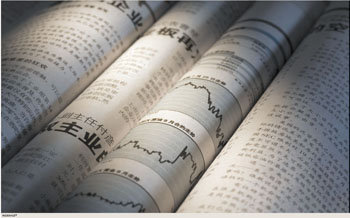INFLATION OVERHAUL
IMPLICATIONS OF THE OVERHAUL OF INFLATION METRICS
Shiran Fernando critiques the new formula to track inflation

It may not be the most exciting area of economic development but one that is very much needed. The Department of Census and Statistics (DCS) updated its Colombo Consumers’ Price Index (CCPI) to a new base year of 2013 from the previous 2006/07. The base was last revised in June 2011, a good five and a half years ago. Reporting under the new base commenced with the January 2017 data.
In November 2015, the DCS released a national index for inflation – the National Consumer Price Index (NCPI). While one may point out that the latest revision may have come about because Sri Lanka is working under an International Monetary Fund (IMF) programme, this base revision has been discussed for a few years.
Both indices now report from a 2013 base, and are reflective of the Household Income and Expenditure Survey (HIES) conducted in 2012/13.

KEY CHANGES Alcohol, beverages and tobacco have their own subcategory in the new index although its weightage is rather marginal, standing at one percent (the NCPI has this subcategory at 2.3% of its total basket).
Restaurants and hotels, which were included as part of the food and non-alcoholic beverages (F&B) subcategory, now have their own subcategory with a weightage of 5.1 percent.
The significant change is the reduction in the weightage of the F&B subcategory in the latest basket compared to the previous base – the weightage has reduced from 41 percent to 28.2 percent, which is a significant development.
Under the previous base, the overall direction was dictated by the F&B subcategory. This impact was noticeable during high-demand months – such as at the end of the year or in and around April – or if there were concerns about food supply either due to droughts or floods. As a result, we would see a movement in the CCPI’s headline inflation.
With this new base, given the reduction in the basket weightage, we’re unlikely to see as much movement in the demand and supply factors compared to the old base.
PRICE CONTROLS With the drop in the F&B percentage, the utilities subcategory now has the highest weightage in the index. The subcategory (which consists of housing, water, electricity, gas and other fuels) has increased in weight to 32 percent (from 23.7%) based on the old index.
In the absence of market-based pricing for most items like electricity, water, LPG and kerosene in this category, it is very dependent on future-administrated price changes by the government, which are difficult to predict.
We would have a clearer picture on the direction of inflation if the government had met its key structural benchmark of introducing a pricing formula for electricity and fuel by the end of last year under the IMF programme.
The purpose of this formula is to make price revisions more transparent, and set a pricing formula price that would shift the Ceylon Petroleum Corporation (CPC) and Ceylon Electricity Board (CEB) into a healthy financial position.
Until such a formula is introduced or made known to the market, the CCPI remains sensitive to such price changes by the government. Moreover, given the increase in weightage, the CCPI could be more volatile under the new base.
CURRENT TRENDS Despite the base changes and composition differences, the inflation trend heading into 2017 has been on the rise.
The index had benefitted largely from the fall in oil prices in global markets during 2016 and early 2017. While this benefit is tapering off, the drought has negatively impacted food supply. This has placed upward pressure on the CCPI index and is expected to continue in particular in the first half of this year.
MONETARY POLICY The Central Bank of Sri Lanka (CBSL) aims to transition to a flexible inflation-targeting framework as its monetary policy framework.
In brief, this framework can be described as one in which the CBSL will have a range for its inflation target in the medium term, which will be announced to the public. This will take into account developments in interest rates, employment, output and the currency.
The Central Bank is expecting inflation to stabilise at around mid-single-digit levels (i.e. between 4 and 6%) although an explicit range hasn’t been announced at the time of writing.
INFLATION OUTLOOK Which is why this represents a much-needed development because the common view held by the general public is that the ground situation has been quite different to what was being officially reported. With an outdated base year, it wasn’t a reflection of current expenditure.
The new basket should look to ease that concern although we will in all likelihood continue to say that the rate of change in prices is much higher than the official index.



